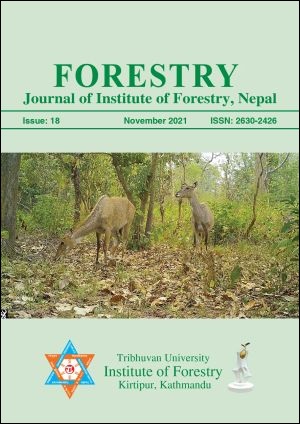Knowledge power nexus in Nepal's community forest planning
DOI:
https://doi.org/10.3126/forestry.v18i01.41729Keywords:
scientific forestry, bureaucracy, community forest users, remote sensingAbstract
The forest management plans started as simple document turned to complex silviculture based plans that included compartmentalization and detailed mapping of the forests. Several researches focused on the community forestry outcomes, but there is a paucity of studies on the implications GIS based mapping of small patches of community forests from the users perspectives. The plans have switched the users from adopting local knowledge to technical scientific knowledge. Thus, this paper explores the understanding of local communities about the forests and implications of complex GIS tools in community forestry. Taking a case study approach, this study compared participatory maps produced by the local communities with the maps produced through Landsat Image classification in terms of accuracy, acceptability by the local users and associated costs. Semi-structured interviews of community forest user groups and forest bureaucracy and focus group discussions with the users were carried out to analyse the significance of the role of GIS based mapping in community forest management. The findings revealed that participatory maps performed better in terms of accuracy, cost and acceptability by the users. The local communities found it difficult to interpret the GIS-based maps. The users considered that the forest bureaucracy is using these GIS-based maps as a means of controlling the users from a distance. Hence, blending of local and scientific knowledge will yield better results and increase the ownership of technical interventions in community forestry.
Downloads
Downloads
Published
How to Cite
Issue
Section
License
© Tribhuvan University, Institute of Forestry




